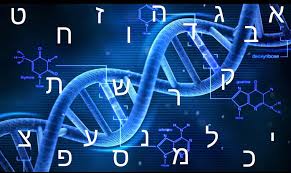\At the end of his life, having given the Israelites at God’s behest 612 commands, Moses is instructed to give them the last; command 613:
Now therefore write down for yourselves this song, and teach it to the people of Israel; put it in their mouths, that this song may be my witness within the people of Israel1.
According to the plain sense of the verse, God is speaking to Moses and Joshua and is referring to the song in the following chapter, “Listen, O heavens, and I will speak; Hear, O earth, the words of My mouth.” Oral tradition, however, gave it a different and much wider interpretation, understanding it as a command for every Jew to write – or at least take some part in writing – a Sefer Torah, a scroll of the law:
Said Rabbah: even though our ancestors have left us a scroll of the Torah, it is our religious duty to write one for ourselves, as it is said: “Now therefore write this song, and teach it to the people of Israel; put it in their mouths, that this song may be a witness for me against the people of Israel.”2
The logic of the interpretation seems to be, first, that the phrase “write down for yourselves” could be construed as referring to everyThere is something poetic about this being the last of the commands Israelite (Ibn Ezra), not just Moses and Joshua. Secondly, the passage goes on to say: “Moses finished writing in the book the words of this law from beginning to end.”3 The Talmud4 offers a third reason. The verse goes on to say: “that this song may be My witness within the people” – implying the Torah as a whole, not just the song in chapter 32.
There is something poetic about this being the last of the commands. It is as if God were saying to the Israelites: “It is not enough that you have received the Torah from Moses. You must make it new again in every generation.” The covenant was not to grow old. It had to be periodically renewed.
So it is to this day, that Torah scrolls are still written as in ancient times, by hand, on parchment, using a quill – as were the Dead Sea Scrolls two thousand years ago. In a religion almost devoid of sacred objects (icons, relics), the Torah scroll is the nearest Judaism comes to endowing a physical entity with sanctity – and this is an understatement. The Torah is less like an object than a person. In its presence we stand as if it were a king. On Simchat Torah we dance with it as if it were a bride. If one is, God forbid, damaged or destroyed we bury it as if it were a human; we mourn as if we had lost a relative. Judaism is the story of a love affair between a people and a book, the Book of Books.
What though – if we take the command to refer to the whole Torah and not just one chapter – is the significance of the word “song” [shirah]: “Now therefore write down for yourselves this song”? The word shirah appears five times in this passage. It is clearly a key-word. Why? On this, two nineteenth century scholars offered striking explanations.
Netziv (R. Naftali Zvi Yehudah Berlin) interprets it to mean that the whole Torah should be read as poetry, not prose (the word shirah in Hebrew means both a song and a poem). To be sure, most of the Torah is written in prose, but it has, argues Netziv, two characteristics of poetry. First, it is allusive rather than explicit. It leaves unsaid more than is said. Secondly, like poetry, it hints at deeper reservoirs of meaning, sometimes by the use of an unusual word or sentence construction. Descriptive prose carries its meaning on the surface. The Torah, like poetry, does not.5
In this brilliant insight, Netziv anticipates one of the great twentieth century essays on biblical prose, Erich Auerbach’s ‘Odysseus’ Scar’. Auerbach contrasts the narrative style of Genesis with that of Homer. Homer uses dazzlingly detailed descriptions so that each scene is set out pictorially as if bathed in sunlight. By contrast, biblical narrative is spare and understated. In the example Auerbach cites – the story of the binding of Isaac – we do not know what the main characters look like, what they are feeling, what they are wearing, what landscapes they are passing through:
The decisive points of the narrative alone are emphasized, what lies between is non-existent; time and place are undefined and call for interpretation; thoughts and feelings remain unexpressed, are only suggested by the silence and the fragmentary speeches; the whole, permeated with the most unrelieved suspense and directed toward a single goal . . . remains mysterious and “fraught with background”.
A completely different aspect is alluded to by R. Yechiel Michal Epstein, author of the halakhic code Arukh ha-Shulchan.6 Epstein points out that the rabbinic literature is full of arguments, about which the sages said: “These and those are the words of the living God.” This, says Epstein, is one of the reasons the Torah is called “a song” – because a song becomes more beautiful when scored for many voices interwoven in complex harmonies.
A song becomes more beautiful when scored for many voices interwoven in complex harmonies
I would suggest a third dimension. The 613th command is not simply about the Torah, but about the duty to make the Torah new in each generation. To make the Torah live anew, it is not enough to hand it on cognitively – as mere history and law. It must speak to us affectively, emotionally.
Judaism is a religion of words, and yet whenever the language of Judaism aspires to the spiritual it breaks into song, as if the words themselves sought escape from the gravitational pull of finite meanings. There is something about melody that intimates a reality beyond our grasp, what William Wordsworth called the “sense sublime / Of something far more deeply interfused / Whose dwelling is the light of setting suns / And the round ocean and the living air.” Words are the language of the mind. Music is the language of the soul.
Music is central to the Judaic experience. We do not pray; we daven, meaning we sing the words we direct toward heaven. Nor do we read the Torah; instead we chant the weekly portion, each word with its own cantillation. Even rabbinical texts are never merely studied; we chant them with the particular sing-song known to all students of Talmud. Each time and text has its specific melodies. The same prayer may be sung to half-a-dozen different tunes depending on whether it is part of the morning, afternoon or evening service, and whether the day is a weekday, a Sabbath, a festival or one of the High Holy Days. There are different cantillations for biblical readings, depending on whether the text comes from the Mosaic books, the prophetic literature, or the Ketuvim, ‘the writings.’ Music is the map of the Jewish spirit, and each spiritual experience has its own distinctive melodic tonality.
The 613th command – to make the Torah new in every generation – symbolizes the fact that though the Torah was given once, it must be received many times, as each of us, through our study and practice, strives to recapture the pristine voice heard at Mount Sinai. That requires emotion, not just intellect. It means treating Torah not just as words read, but also as a melody sung. The Torah is God’s libretto, and we, the Jewish people, are His choir, the performers of His choral symphony. And though, when Jews speak they often argue, when they sing, they sing in harmony, as the Israelites did at the Red Sea, because music is the language of the soul, and at the level of the soul Jews enter the unity of the Divine which transcends the oppositions of lower worlds. The Torah is God’s song, and we collectively are its singers.
Footnotes
1.Deuteronomy 31:19.
2.Sanhedrin 21b.
3.Deuteronomy 31:24.
4.Nedarim 38a.
5.Kidmat Davar, preface to Ha’amek Davar, 3.
6.Choshen Mishpat, introduction.

